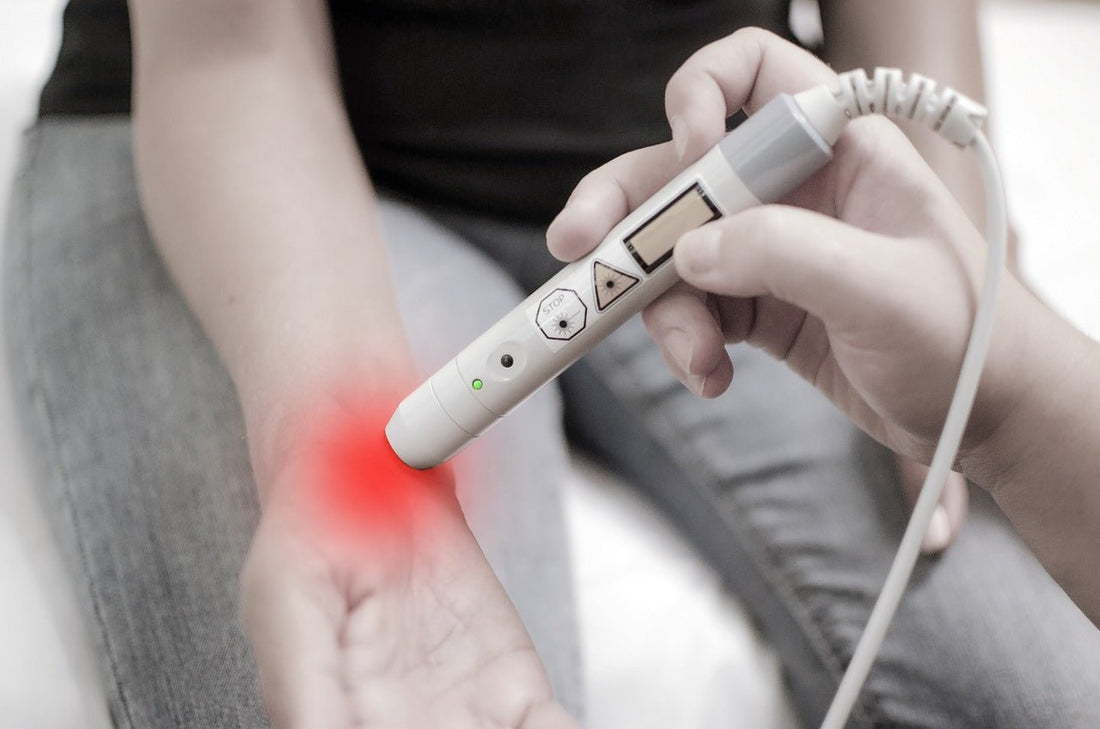
Photobiomodulation and Inflammation Reduction: Exploring Light Therapy's Impact on Inflammatory Processes
Share
Inflammation is a natural response of the body to injury, infection, or irritation, but chronic inflammation can contribute to various health issues, including fibromyalgia, arthritis, and autoimmune disorders. Photobiomodulation, commonly known as laser light therapy, has demonstrated its potential in reducing inflammation by modulating the production of pro-inflammatory cytokines. This article will discuss the science behind light therapy's anti-inflammatory effects and present five influential research papers that have shaped our understanding of this therapy.
How Light Therapy Reduces Inflammation
Light therapy uses specific wavelengths of light, typically in the red and near-infrared spectrum, to stimulate cellular processes within the body. When the skin absorbs light at these wavelengths, it triggers a series of events at the cellular level that can modulate the production of inflammatory mediators. Key mechanisms involved in inflammation reduction through light therapy include:
- Decreased pro-inflammatory cytokine production: Light therapy can downregulate the production of pro-inflammatory cytokines, such as tumor necrosis factor-alpha (TNF-α) and interleukin-1 beta (IL-1β), reducing inflammation.
- Increased anti-inflammatory cytokine production: Light therapy can promote the release of anti-inflammatory cytokines, such as interleukin-10 (IL-10), which helps to resolve inflammation.
- Enhanced cellular repair and regeneration: Light therapy can stimulate cellular processes that promote tissue repair and regeneration, thereby alleviating inflammation.
Five Influential Research Papers on Light Therapy and Inflammation Reduction
1. Aimbire, F., Lopes-Martins, R. Á., Castro-Faria-Neto, H. C., Albertini, R., Chavantes, M. C., Pacheco, M. T., ... & Bjordal, J. M. (2006). Low-level laser therapy can reduce lipopolysaccharide-induced contractile force dysfunction and TNF-alpha levels in rat diaphragm muscle. Lasers in Medical Science, 21(4), 238-244.
This study investigated the effects of low-level laser therapy on lipopolysaccharide-induced inflammation in rat diaphragm muscles. The results demonstrated that light therapy reduced contractile force dysfunction and TNF-alpha levels, indicating its potential for reducing inflammation.
2. de Lima, F. M., Villaverde, A. B., Albertini, R., Corrêa, J. C., Carvalho, R. L., Munin, E., ... & Aimbire, F. (2011). Dual effect of low-level laser therapy (LLLT) on the acute lung inflammation induced by intestinal ischemia and reperfusion: action on anti- and pro-inflammatory cytokines. Lasers in Surgery and Medicine, 43(5), 410-420.
This study examined the effects of low-level laser therapy on acute lung inflammation induced by intestinal ischemia and reperfusion. The authors found that light therapy had a dual effect on inflammation, decreasing pro-inflammatory cytokines while increasing anti-inflammatory cytokines.
3. De Marchi, T., Leal-Junior, E. C., Lando, K. C., Cimadon, F., Vanin, A. A., da Rosa, D. P., ... & de Carvalho, P. D. T. C. (2014). Low-level laser therapy (LLLT) reduces oxidative stress in primary cortical neurons in vitro. Lasers in Medical Science, 29(5), 1691-1697.
Although this study focuses on the effects of low-level laser therapy on oxidative stress in primary cortical neurons in vitro, it provides valuable insights into the potential anti-inflammatory effects of light therapy. The researchers found that low-level laser therapy reduced oxidative stress in the neurons, which can play a role in the inflammatory process.
4. Hamblin, M. R. (2017). Mechanisms and applications of the anti-inflammatory effects of photobiomodulation. AIMS Biophysics, 4(3), 337-361.
In this comprehensive review, Hamblin discusses the mechanisms and applications of photobiomodulation's anti-inflammatory effects. He presents evidence from numerous studies that demonstrate how light therapy reduces the production of pro-inflammatory cytokines and increases the production of anti-inflammatory cytokines. This review offers a solid foundation for understanding the anti-inflammatory potential of light therapy in various health conditions, including fibromyalgia.
5. Keszler, A., Lindemer, B., Högberg, J., & Nordquist, B. (2018). Therapeutic effect of near-infrared light: Biphasic dose-dependent response on human fibroblast proliferation in vitro. Journal of Biophotonics, 11(11), e201800129.
This study explored the biphasic dose-dependent response of human fibroblasts to near-infrared light therapy, revealing that low doses of light stimulated cell proliferation while higher doses inhibited it. This finding is crucial to understanding the optimal dosing of light therapy for reducing inflammation and promoting tissue repair.
Conclusion
The research papers presented in this article highlight the anti-inflammatory potential of photobiomodulation. By modulating the production of pro-inflammatory and anti-inflammatory cytokines, light therapy can effectively reduce inflammation and alleviate symptoms associated with various inflammatory related health conditions. As our understanding of the mechanisms and applications of photobiomodulation continues to expand, light therapy stands to become a powerful tool for managing inflammation and improving overall health.
For more on light therapy and inflammation:
- Near Infrared Light Therapy: A Full Guide to NIR’s Potential in Your Health Journey
- What Does Red Light Therapy Do? A Beginner’s Guide
- Red Light Therapy At Home For Pain: Everything You Need To Know
- Red Light Therapy Benefits for Pain Relief
